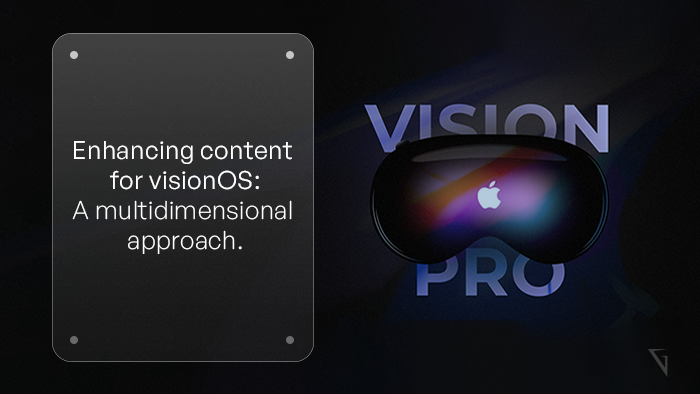

In the realm of VisionOS, Apple’s spatial computing platform, audio and video content take on a whole new dimension. With spatial audio and 3D video capabilities, developers can create immersive and captivating experiences on Apple Vision Pro. In this blog, we will delve into the world of enhancing audio and video content on VisionOS, exploring techniques to optimize your app’s audio soundtrack and harnessing the power of stereoscopic viewing to deliver a multidimensional experience.
Spatial audio is a key feature of VisionOSthat adds depth and immersion to your app’s audio content. By leveraging frameworks like PHASE and AVFAudio, developers can position audio sources within the 3D space, creating a realistic and dynamic audio experience. Optimize your app’s audio soundtrack by carefully placing audio elements in the virtual environment and considering their spatial relationships to enhance the overall immersive experience.
In addition to spatial audio, visionOS supports 3D video assets, opening up a world of possibilities for creating visually captivating experiences. By capturing video in 3D and preparing your assets for playback, you can provide users with a multidimensional viewing experience on Apple Vision Pro. Take advantage of QuickTime File Format extensions to include multiple video tracks for stereoscopic playback, ensuring compatibility with different devices. Utilize the AVFoundation framework to adapt playback automatically based on the capabilities of the current device, providing an optimized experience for each user.
Stereoscopic viewing is a game-changer when it comes to delivering immersive video experiences on VisionOS. By presenting separate images to each eye, stereoscopic content creates a sense of depth and realism, drawing users deeper into the virtual environment. When preparing your video assets, consider the optimal scenarios for adding depth to your app’s windows, such as displaying 3D models alongside product descriptions or allowing users to explore virtual scenes in their surroundings. Think creatively about how stereoscopic viewing can enhance your app’s visual storytelling and engage users in new and exciting ways.
To ensure your audio and video content shines on visionOS, here are some best practices to consider:
With VisionOS, developers have a wealth of opportunities to enhance their apps’ audio and video content, creating multidimensional experiences on Apple Vision Pro. By optimizing your app’s audio soundtrack using frameworks like PHASE and AVFAudio, and incorporating 3D support and stereoscopic viewing into your video assets, you can deliver immersive and captivating experiences that engage and delight users. Embrace the power of spatial audio and 3D video on VisionOSto unlock a new dimension of storytelling and user engagement.
OpenAI DevDay showcases the latest AI innovations, pushing technology’s boundaries in an ever-evolving landscape.
Explore the top 10 database types for software projects, their unique features, and which one…
Explore PWAs: Your FAQs Guide to Integrating Camera, Geolocation & Device APIs. Harness native features…
General Understanding of PWAs and SEO 1. What is a Progressive Web App (PWA)? A…
Understanding Offline-First Approach Basics 1. What is the concept of "Offline-First" in the context of…
General Overview 1. What are cross-platform frameworks, and how do they relate to Progressive Web…